1. Sahariya Tribe – Indian Society

Why in News?
A recent genetic study has revealed a potential genetic link to the high prevalence of tuberculosis (TB) in the Sahariya tribe of central India. This brings attention to their distinct health vulnerabilities and overall socio-economic marginalization.
Key Facts about the Sahariya Tribe
| Feature | Details |
|---|---|
| Tribe Name | Sahariya (Also spelled Saharia) |
| Classification | Particularly Vulnerable Tribal Group (PVTG) |
| Population Distribution | Mostly in Madhya Pradesh, with presence in Rajasthan and Uttar Pradesh (2011 Census) |
| Community Structure | Live in clusters called Seharana; houses made from stone boulders and slabs (Patore) |
| Language | Speak local dialects; original tribal language largely lost |
| Religion | Practice traditional ethnic religion with Hindu influences |
| Cultural Expression | Famous for Saharia Swang, a folk dance performed during Holi |
| Livelihood | Depend on forest produce, small-scale agriculture, and seasonal migration for work |
| Health Concerns | High incidence of tuberculosis (TB); now linked to genetic susceptibility |
Background and Context
The Sahariya tribe has long faced marginalization and underdevelopment. Despite various welfare schemes, they continue to experience poor health outcomes, limited access to education, and economic instability. The recent discovery of genetic vulnerability to TB highlights the urgent need for targeted healthcare interventions and inclusive development policies for such vulnerable tribal groups.
Government Initiatives for PVTGs (Contextual Relevance)
- Pradhan Mantri Janjatiya Vikas Mission – Focuses on education, health, and livelihoods of tribal communities.
- Vanbandhu Kalyan Yojana – Addresses gaps in basic amenities, health, education, and livelihood among tribals.
- Tribal TB Initiative – Aims to eliminate TB among tribal populations in mission mode.
Exam Connect – Possible Questions
Prelims
1. The Sahariya tribe, recently in news due to high prevalence of TB, is classified under which category?
A. Scheduled Castes
B. Scheduled Tribes
C. Particularly Vulnerable Tribal Groups (PVTG)
D. Nomadic Tribes
Answer: C. Particularly Vulnerable Tribal Groups (PVTG)
2. Consider the following statements about the Sahariya tribe:
1. They primarily reside in Himachal Pradesh and Uttarakhand.
2. Their traditional dance form is known as Saharia Swang.
3. They live in structures called Seharana made with Patore.
Which of the above statements are correct?
A. 2 and 3 only
B. 1 and 2 only
C. 1 and 3 only
D. 1, 2, and 3
Answer: A. 2 and 3 only
Mains
1. Discuss the socio-economic and health challenges faced by the Sahariya tribe and evaluate the effectiveness of government schemes aimed at addressing these issues.
2. How does the classification of tribes as Particularly Vulnerable Tribal Groups (PVTGs) help in focused policy implementation? Illustrate with examples.
2. Recount of Votes by Courts – Polity
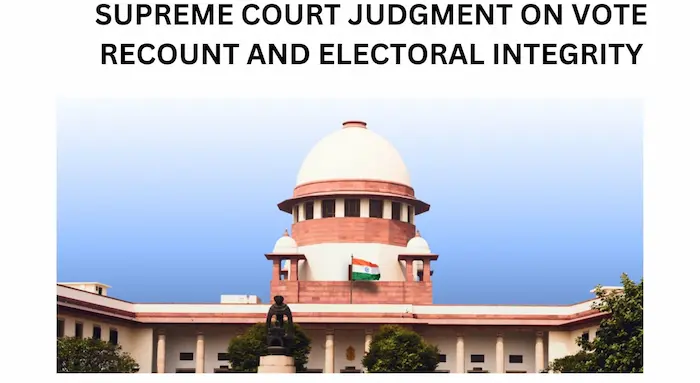
Why in News?
For the first time in its history, the Supreme Court of India ordered a recount of EVM votes, reversing the result of a sarpanch election in Haryana. This has set a precedent and raised interest in the legal framework for election disputes and the conditions for judicial recounts.
Legal Framework for Challenging Election Results
Jurisdiction
- Parliamentary, Assembly, and State Council elections: Challenged via election petitions in the High Court of the respective state.
- Local body elections: Petitions must be filed in the civil court of the district.
Who Can File?
- Only candidates or electors of the concerned constituency.
- Petition must be filed within 45 days from the date of declaration of results.
Requirements for a Valid Petition
- Must contain concise material facts and specific allegations of corrupt practices.
- Allegations should mention names, dates, places, and events in detail.
- Vague or generalized claims are rejected by courts.
Grounds for Invalidating an Election
Courts can declare an election invalid due to:
- Bribery or undue influence.
- Disqualification of a candidate.
- Improper acceptance or rejection of nomination papers.
- Violation of constitutional or election laws that materially affect the result.
Recount of Votes – Judicial Standards
- Recounts are not automatic; courts only allow them when the petitioner provides:
- Concrete material facts, and
- Evidence suggesting probable errors in vote counting.
- Recounts are usually conducted at the election site.
- Exception: In the Panipat case, the Supreme Court conducted the recount itself on its premises.
Declaring a New Winner
- Courts may declare another candidate as winner if:
- It’s proven that the petitioner or another candidate secured a majority or would have won but for corrupt practices or illegalities.
- This is rare and requires concrete, verifiable proof of tainted votes or violations.
Notable Example:
- Chandigarh Mayoral Election (Feb 2024): Supreme Court intervened and declared the actual winner based on tampering evidence and improper invalidation of votes.
Related Constitutional Provisions & Laws
- Article 329: Bars interference in election matters except via election petitions.
- Representation of the People Act, 1951: Governs conduct of elections and disputes.
- Election Commission of India (ECI): Administrative role in vote counting and result declaration.
Exam Connect – Possible Questions
Prelims
- Which of the following courts can entertain election petitions related to local body elections?
A. Supreme Court
B. High Court
C. District Civil Court
D. State Election Commission
Answer: C. District Civil Court - Under which Article of the Constitution are election disputes barred from court interference except by election petition?
A. Article 324
B. Article 326
C. Article 329
D. Article 356
Answer: C. Article 329
Mains
- Discuss the legal framework governing the recounting of votes in India. In what circumstances can courts intervene in election outcomes?
- The power of the judiciary to oversee and correct electoral outcomes strengthens democracy. Critically analyze this statement in the context of recent Supreme Court interventions in election disputes.
3. Udyam Sakhi Portal (Udyam Sakhi-II) – Economy
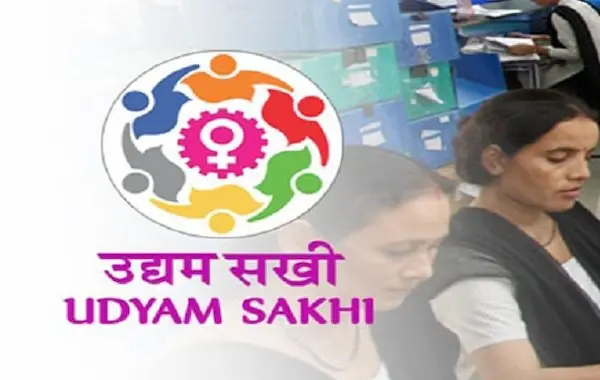
Why in News?
The Ministry of Micro, Small and Medium Enterprises (MSME) has relaunched and expanded the Udyam Sakhi Portal to provide comprehensive support for women entrepreneurs in launching, scaling, and sustaining their businesses. This step aligns with the government’s vision of promoting women-led development and economic self-reliance.
Key Highlights of Udyam Sakhi Portal
- Originally launched in March 2018 by the Ministry of MSME.
- Aims to promote entrepreneurship among women by providing them access to business resources, funding information, and mentorship.
- The portal is a centralized platform for:
- Accessing financial schemes
- Learning about entrepreneurship policies
- Exploring market opportunities
- As of now, over 4,500 women entrepreneurs have registered.
Features & Services Offered
1. Entrepreneurship Support
- Access to learning tools, business planning resources, and training programs.
- Guidance on setting up affordable and scalable business models.
2. Funding & Incubation
- Information on government credit schemes, subsidies, and venture support.
- Incubation centers to support early-stage startups.
3. Mentorship & Networking
- Women can access experienced mentors.
- Participate in one-on-one investor meetings and business development workshops.
4. Capacity Building
- Conducts market surveys, technical training, and provides educational resources.
- Offers e-learning modules to improve business acumen.
Significance of the Initiative
- Helps bridge the gender gap in entrepreneurship.
- Encourages economic participation of women, especially in Tier 2 and Tier 3 cities.
- Supports the ‘Atmanirbhar Bharat’ and Digital India missions.
- Enhances financial independence and decision-making power of women.
Exam Connect – Possible Questions
Prelims
- Which ministry launched the Udyam Sakhi Portal to support women entrepreneurs?
A. Ministry of Women and Child Development
B. Ministry of Micro, Small and Medium Enterprises
C. Ministry of Finance
D. Ministry of Skill Development and Entrepreneurship
Answer: B. Ministry of Micro, Small and Medium Enterprises - What is the primary objective of the Udyam Sakhi Portal?
A. To provide free education to girls
B. To offer legal assistance to women
C. To support women entrepreneurs with business resources
D. To provide maternity benefits to working women
Answer: C. To support women entrepreneurs with business resources
Mains
- Discuss the role of the Udyam Sakhi Portal in promoting women entrepreneurship in India. How does it contribute to inclusive economic development?
- Women entrepreneurs in India face multiple structural challenges. Critically analyze how digital initiatives like the Udyam Sakhi Portal can help overcome these barriers.
4. India’s Role in Ending Global Hunger – Governance
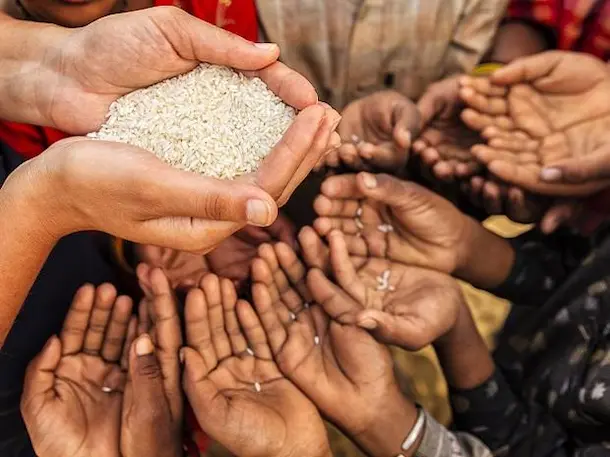
Why in News?
According to the UN’s State of Food Security and Nutrition in the World Report 2025, the number of undernourished people globally dropped from 688 million in 2023 to 673 million in 2024 (8.2% of global population). This is a positive reversal after years of rising global hunger.
India’s nutrition-driven reforms, public distribution improvements, and agrifood digitization have been crucial contributors to this progress.
India’s Achievements in Reducing Hunger
- Undernourishment Rate fell from 14.3% (2020–22) to 12% (2022–24).
Approx. 30 million fewer Indians are now living with hunger. - India’s success is driven by a strategic shift:
From calorie sufficiency → to nutrition security
From distribution-centric → to digitally enabled welfare delivery
Key Reforms and Initiatives
1. Public Distribution System (PDS) Transformation
- Digital infrastructure: Aadhaar-based targeting, biometric authentication, and real-time inventory tracking.
- Result: Enhanced transparency, reduced leakages, and better targeting.
2. One Nation One Ration Card (ONORC)
- Ensures food security for migrant workers.
- Enables nationwide portability of ration entitlements.
3. Nutrition-Centric Policy Shift
- Focus on diversifying food baskets: pulses, millets, and fortified foods.
- Addressing micronutrient deficiencies among vulnerable groups.
4. Agrifood System Reforms
- Investments in post-harvest infrastructure.
- Support for Farmer Producer Organizations (FPOs) and women-led agri-enterprises.
- Promotion of local food systems for nutritious, affordable diets.
Challenges That Remain
- Over 60% of the population still cannot afford a healthy diet due to rising prices of nutrient-rich foods.
- Micronutrient deficiencies and urban-rural malnutrition gaps persist.
- Structural inequalities and income-based food access barriers continue to impact food security.
India’s Global Contribution
- India’s model demonstrates how policy innovation, digital governance, and inclusive growth can lead to large-scale hunger reduction.
- Acts as a case study for developing nations in achieving SDG 2: Zero Hunger by 2030.
Exam Connect – Possible Questions
Prelims
- What is the objective of the One Nation One Ration Card (ONORC) scheme?
A. Promote universal income support
B. Enable ration portability across India
C. Provide health insurance to farmers
D. Launch digital ration cards for urban poor
Answer: B. Enable ration portability across India - Which of the following Sustainable Development Goals (SDGs) aims to achieve ‘Zero Hunger’?
A. SDG 1
B. SDG 2
C. SDG 3
D. SDG 4
Answer: B. SDG 2
Mains
- Critically examine India’s role in reducing global hunger. How have governance reforms in food distribution and nutrition contributed to this achievement?
- Despite progress in food security, access to nutritious diets remains a challenge in India. Discuss the structural barriers and suggest policy-level interventions to overcome them.
5. Inoperative PM Jan Dhan Accounts: A Concern – Economy
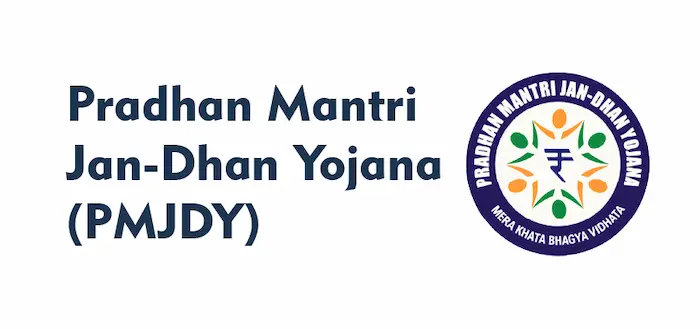
Why in News?
The Government of India recently informed Parliament that 23% of the total 56.04 crore PM Jan Dhan Yojana (PMJDY) accounts are inoperative, raising serious concerns regarding the depth and sustainability of financial inclusion in India.
Key Highlights
- Inoperative Accounts: Roughly 12.89 crore Jan Dhan accounts have seen no customer-initiated transaction for over 2 years.
- Reflects challenges in account usage, despite massive account opening successes.
About Pradhan Mantri Jan Dhan Yojana (PMJDY)
| Feature | Details |
|---|---|
| Launch Year | 2014 |
| Aim | To provide universal access to banking facilities, insurance, and pension for the unbanked |
| Type of Account | Basic Savings Bank Deposit (BSBD) account with zero balance requirement |
| Documents Required | Minimal paperwork, e-KYC using Aadhaar |
Objectives of PMJDY
- Ensure access to banking, savings, and remittance facilities
- Promote financial literacy
- Enable Direct Benefit Transfers (DBT) via JAM Trinity (Jan Dhan – Aadhaar – Mobile)
- Provide accident and life insurance cover
- Offer overdraft facility to encourage regular use of accounts
Key Features of PMJDY
| Feature | Description |
|---|---|
| RuPay Debit Card | Issued to every account holder |
| Accident Insurance | ₹1 lakh (₹2 lakh for accounts opened after August 2018) |
| Life Insurance | ₹30,000 for accounts opened between Aug 2014–Jan 2015 |
| Overdraft Facility | Up to ₹10,000 for eligible accounts |
| Coverage Expansion | Age limit raised from 60 to 65 years, all adults now included |
| Interoperability | Enabled through Aadhaar, RuPay, and mobile integration |
Concerns with Inoperative Accounts
- Superficial Financial Inclusion: Opening accounts alone is not enough if people don’t use them.
- Low Transaction Activity: Reflects lack of trust, awareness, or inability to maintain balances.
- Gender Divide: Women account holders, especially in rural areas, may be more likely to have dormant accounts.
- Migration & Accessibility: Migrant workers may not be able to operate accounts across regions, despite ONORC.
- DBT Dependency: Inactivity reduces the potential of accounts being used for welfare transfers or credit access.
Way Forward
- Improve Usage: Encourage transactions through financial literacy and incentive schemes.
- Technology Access: Ensure digital banking tools (UPI, mobile apps) reach remote populations.
- Behavioral Nudges: Use SMS alerts, overdraft reminders, and community banking to boost engagement.
- Women-Centric Models: Integrate PMJDY with Self-Help Groups and livelihood missions for women.
- Monitor Dormancy Trends: Continuous assessment of usage patterns and regional gaps.
Exam Connect – Possible Questions
Prelims
- Which of the following benefits is NOT associated with the PM Jan Dhan Yojana?
A. Overdraft facility up to ₹10,000
B. Life insurance cover of ₹30,000
C. Free medical treatment under Ayushman Bharat
D. RuPay debit card with accident insurance
Answer: C. Free medical treatment under Ayushman Bharat - The JAM Trinity refers to:
A. Jan Dhan Yojana, Aadhaar, Mobile
B. Jan Aushadhi, Aadhaar, Mobile
C. Jan Suraksha, Aadhaar, Mobile
D. Jan Nivesh, Aadhaar, Mobile
Answer: A. Jan Dhan Yojana, Aadhaar, Mobile
Mains
- Discuss the significance of PM Jan Dhan Yojana in promoting financial inclusion in India. What do inoperative accounts indicate about the challenges in achieving true inclusion?
- Financial inclusion is not just about opening bank accounts, but also ensuring their usage. Critically examine this statement in the context of inoperative Jan Dhan accounts.
6. PM Modi’s 12th Independence Day Speech: Roadmap to Viksit Bharat – Economy

Why in News?
On August 15, 2025, Prime Minister Narendra Modi delivered his 12th Independence Day address from the Red Fort. The speech presented a visionary roadmap to achieve “Viksit Bharat” (Developed India) by 2047, covering critical sectors such as the digital economy, energy, healthcare, tax reform, and employment generation.
Vision: Viksit Bharat by 2047
Aimed at transforming India from a developing nation into a global economic, technological, and strategic powerhouse by its 100th year of independence in 2047.
Key Takeaways from the Speech
1. Digital Sovereignty & Leadership
- India aims to lead globally in digital transactions and platforms.
- Highlighted UPI, which now accounts for 50% of global real-time digital transactions.
- Strengthening the India Stack (UPI, DigiLocker, Aadhaar, CoWIN, ONDC) for digital governance.
2. Energy Security & Exploration
- National Deepwater Exploration Mission launched to tap into untapped oil & gas reserves.
- Reduction in No-Go Zones: Encouraging private investment in hydrocarbon exploration.
- Focus on critical minerals like lithium and cobalt under the National Critical Minerals Mission to support battery tech and renewable energy.
3. Healthcare Innovation
- India reaffirmed its role as the “Pharmacy of the World”, producing 60% of global vaccines.
- Plans to lead in biopharma innovation and vaccine R&D.
- Positioning India as a global hub for affordable and scalable healthcare solutions.
4. Tax Reforms – Income Tax & GST 2.0
- Proposed New Income Tax Bill:
- Simplifies the tax system.
- Removes obsolete sections and reduces compliance burden.
- GST 2.0 planned for further streamlining indirect taxation.
5. Employment Generation
- Launch of PM Viksit Bharat Rozgar Yojana:
- Aims to generate employment for 3.5 crore youth.
- Promotes skilling, startups, and job-linked incentives.
Other Key Announcements
| Sector | Initiative |
|---|---|
| Minerals | Exploration of 1,200+ sites for strategic minerals (lithium, cobalt) |
| Startups | Focus on youth-led innovation and Make in India 2.0 |
| Manufacturing | Push for self-reliance in electronics, defence, and EVs |
| Strategic Positioning | Vision for India as a trusted global supply chain partner |
Significance of the Speech
- Represents a long-term strategic vision rather than short-term populism.
- Focuses on structural reforms in governance and economy.
- Lays the foundation for India to become a developed nation by 2047.
- Promotes self-reliance, sustainability, and inclusive growth.
Exam Connect – Possible Questions
Prelims
- Which of the following missions is aimed at exploring deep-sea hydrocarbon reserves in India?
A. Sagar Maitri Mission
B. Deep Ocean Mission
C. National Deepwater Exploration Mission
D. Blue Energy Mission
Answer: C. National Deepwater Exploration Mission - As per PM Modi’s 2025 Independence Day speech, which of the following aims to simplify India’s tax structure?
A. GST Samadhan Portal
B. Income Tax (Amendment) Bill 2025
C. GST 2.0 and New Income Tax Bill
D. Bharatiya Tax Niti Abhiyan
Answer: C. GST 2.0 and New Income Tax Bill
Mains
- “The vision of Viksit Bharat 2047 is rooted in inclusive growth and structural reform.” Discuss in light of the key announcements made in the 2025 Independence Day speech.
- Examine the role of digital infrastructure, energy security, and tax reform in shaping India’s development trajectory toward becoming a global power by 2047.
7. Palmyra Palm Tree: Ecological and Economic Significance – Environment
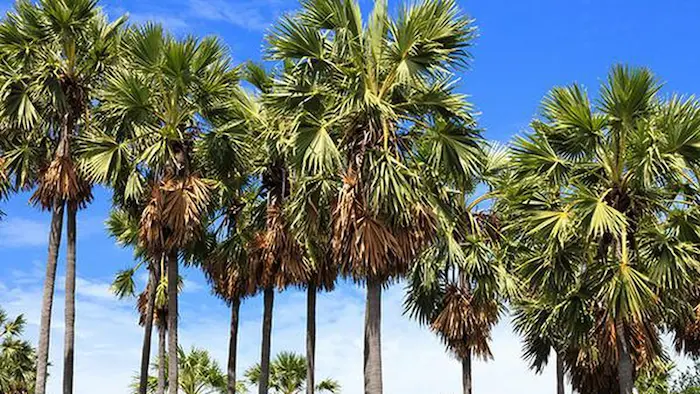
Why in News?
In Odisha, the Palmyra palm tree has gained attention for its dual benefits:
- Reducing lightning-related fatalities, and
- Serving as a vital food source for elephants during lean seasons.
This has renewed interest in its ecological value, biodiversity support, and cultural significance.
About Palmyra Palm Tree
- Scientific name: Borassus flabellifer
- Also known as: Sugar palm, Toddy palm, or Fan palm
- Native to: Tropical Africa
- Cultivated in: India (especially in Tamil Nadu, Odisha, Andhra Pradesh, West Bengal)
Key Characteristics
| Feature | Details |
|---|---|
| Propagation | Through seeds |
| Soil Preference | Sandy and red soils |
| Climatic Suitability | Semi-arid regions with <750 mm rainfall/year |
| Altitude Range | Grows from sea level to 800 m elevation |
| Longevity | Can live over 100 years |
Ecological Benefits
- Lightning Protection: Palmyra palms absorb and disperse lightning, reducing fatalities in open rural areas.
- Biodiversity Support: Provides natural shelter to birds, bats, and other wildlife.
- Elephant Food Source: Crucial during dry seasons, reducing human-elephant conflict.
- Sustainable Crop: Requires low maintenance, suited to climate-resilient agriculture.
Economic and Cultural Uses
- Toddy (sweet sap): Extracted from the inflorescence tip, used as:
- A local beverage (fermented or non-fermented)
- Base for making jaggery (gur) and palm sugar
- Palmyra Jaggery:
Nutrient-rich alternative to cane sugar
Contains iron, calcium, and antioxidants - Local Livelihoods: Used for:
- Furniture and handicrafts
- Weaving mats and baskets
- Roof thatching
- Nadar Community (Tamil Nadu): Traditionally known for utilizing every part of the palm.
Relevance to Sustainable Development
- SDG 15: Life on Land – Biodiversity protection
- SDG 12: Responsible Consumption and Production – Use of sustainable materials
- SDG 13: Climate Action – Drought-resistant species for reforestation
Exam Connect – Possible Questions
Prelims
- Which of the following statements about the Palmyra palm tree is correct?
A. It requires heavy irrigation and grows only in coastal wetlands.
B. It is native to South America and mainly used for timber.
C. It reduces lightning strikes and supports wildlife habitats.
D. Its jaggery contains no nutrients compared to cane sugar.
Answer: C. It reduces lightning strikes and supports wildlife habitats. - The sweet sap collected from the Palmyra palm tree is commonly known as:
A. Neera
B. Toddy
C. Tendu
D. Tisi
Answer: B. Toddy
Mains
- Discuss the ecological and socio-economic significance of the Palmyra palm tree in India. How can its cultivation contribute to sustainable development?
- Nature-based solutions like Palmyra palm cultivation offer both environmental and livelihood benefits. Evaluate their role in climate-resilient rural development.

